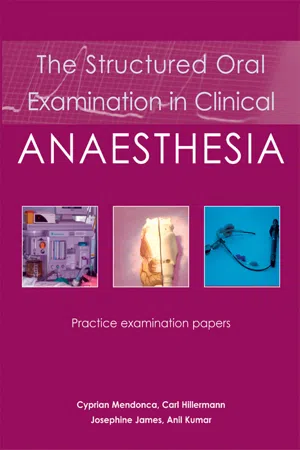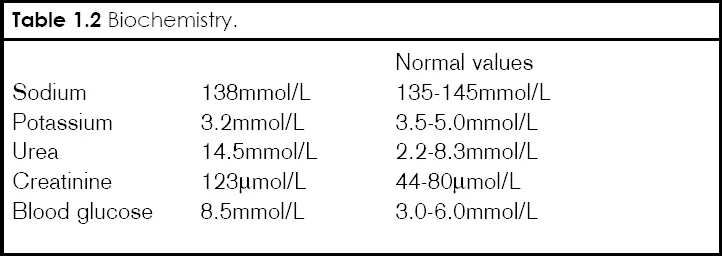
- English
- ePUB (mobile friendly)
- Available on iOS & Android
About This Book
Winner of a HIGHLY COMMENDED AWARD in the Anaesthesia category of the 2010 BMA Medical Book Competition. This book comprises structured questions and answers that closely simulate the structured oral examination (SOE) format of The Royal College of Anaesthetists' final FRCA examination. The style of exam questions has changed over the years and this book matches the most recent changes in this updated exam. It consists of ten sets (chapters) of complete SOE papers. Each SOE set (chapter) includes one long case, three short cases and four different applied basic science topics (anatomy, physiology, pharmacology and clinical measurement). As this book is presented in the format of complete examination papers, it will enable candidates to assess their knowledge and skills. It will also assist trainers in setting up mock exams. With thorough revision of this book, trainees can confidently sit their exams. The authors have been organising final FRCA viva courses for the past five years, running four exam preparation courses a year, attended by about 200 trainees each year. This book includes updated knowledge based on the syllabus and more recent questions asked in the FRCA examination. It is, therefore, essential study material for trainees and a great educational tool for trainers. This book will also help candidates all over the world to pass highly competitive postgraduate examinations in anaesthesia. It is an invaluable educational resource for all anaesthetists.
Frequently asked questions
Information





| ♦ | Myocardial infarction. |
| ♦ | Left ventricular failure or congestive cardiac failure. |
| ♦ | Arrhythmias such as atrial fibrillation (AF). |
| ♦ | Pulmonary embolism. |
| ♦ | Pleural effusion. |
| ♦ | Pneumothorax. |
| ♦ | Transfusion-related acute lung injury (TRALI). |
| ♦ | Electrolyte imbalance. |
| ♦ | Severe systemic infection (sepsis). |
| ♦ | High level of epidural blockade. |
| ♦ | Ischaemic heart disease. |
| ♦ | Mitral valve disease. |
| ♦ | Hypertension. |
| ♦ | Cardiomyopathy. |
| ♦ | Hypoxia. |
| ♦ | Acute hypovolaemia. |
| ♦ | Sepsis. |
| ♦ | Electrolyte disturbances - potassium, magnesium and phosphate. |
| ♦ | Pulmonary thromboembolism. |
| ♦ | Thyrotoxicosis. |
| ♦ | Ensure adequate airway and breathing, and administer 100% oxygen. |
| ♦ | Establish continuous ECG, blood pressure and pulse oximetry monitoring. |
| ♦ | Correct any precipitating factors where possible. |
| ♦ | Determine if the patient is stable or not. |
Table of contents
- Cover Page
- Title Page
- Copyright Page
- Contents
- Preface
- Acknowledgements
- Abbreviations
- SOE 1
- SOE 2
- SOE 3
- SOE 4
- SOE 5
- SOE 6
- SOE 7
- SOE 8
- SOE 9
- SOE 10
- Section index